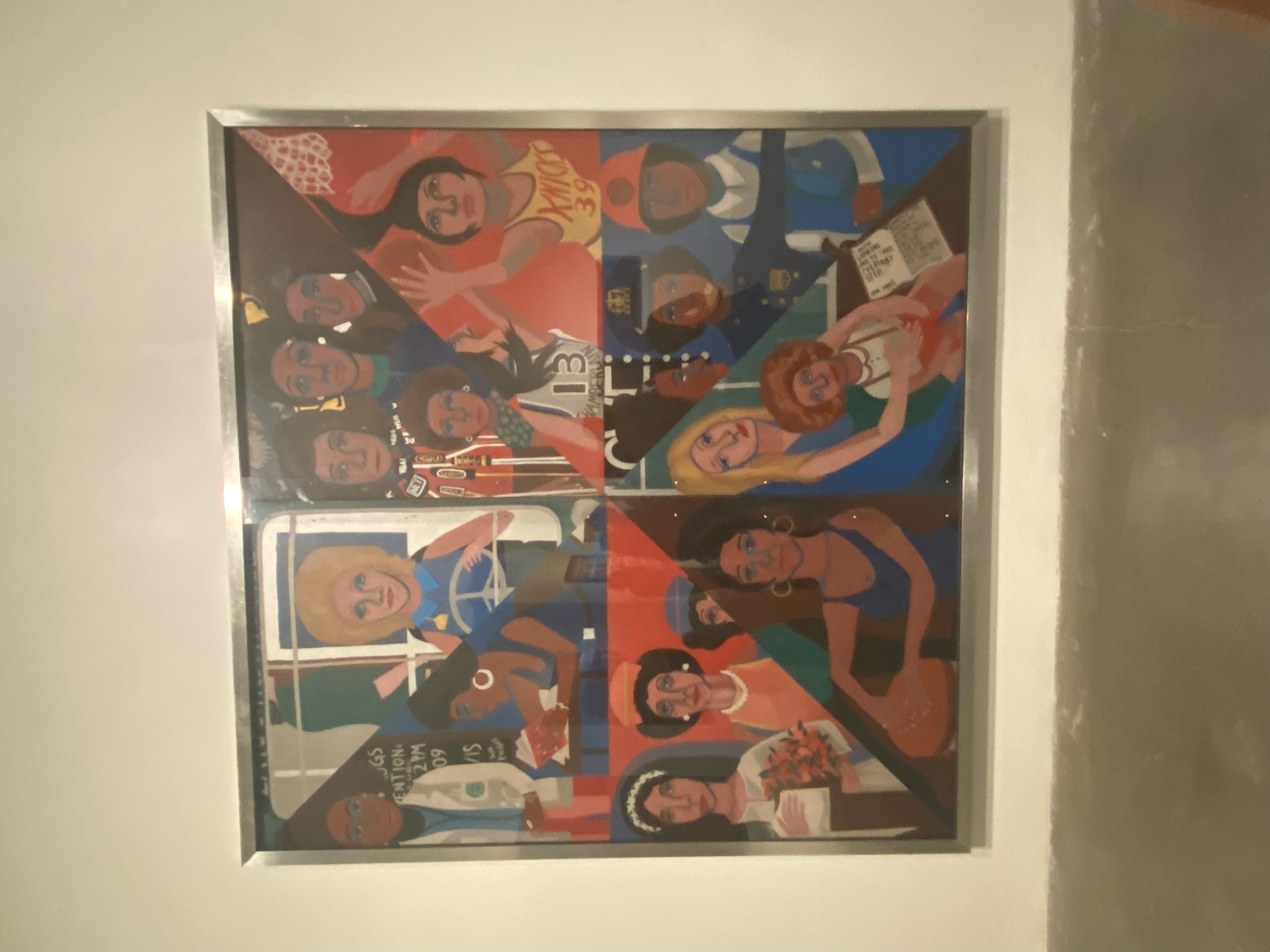Cultural Diplomacy
Faith Ringgold at the New Museum
February 17 – June 5, 2022
The title of the New Museum’s retrospective on Faith Ringold, “American People,” is apt.
The show captures the extent to which Ringold was committed to both America, as an idea, and its people. The spirit is civic. You could see the work adorning the walls of the White House or lining the great reflecting pools on the National Mall. The work operates at that scale. She is a great American artist.
Walk through the show and you see familiar faces everywhere: Martin Luther King, Harriet Tubman, John F. Kennedy, Sojourner Truth, and Rosa Parks. It’s like a family album of the nation. Everyone is there. All of the episodes are captured, including the painful ones. But no matter the pain, no matter the violence and suffering, you are left with no doubt that America is a family.
Then there are surprises. Take, for example, a work commissioned by the Department of Corrections for the women’s prison at Rikers Island. What does it reveal about Ringgold that she agreed to adorn the walls where her fellow Americans were locked in cages? And what can we learn from the painting she produced for those walls — a mural featuring cheery government workers: bus drivers, post men and women, school teachers. Are these the jobs that the prisoners should aspire to do when they are released? Would they be happy working for the same state that imprisoned them?

There are times in which Ringgold broadens her lens and takes in not just American society and history but art history, too. On the top floor, we see Ringgold’s reworkings of canonical paintings from white, European art history. Here is a Matisse, here a Miro, all reworked to add black figures, and a craft aesthetic, into the work that hitherto excluded them. The works are redeemed by this intervention. There is a graceful, diplomatic approach here: I can work with this. No need to burn it all down. No need to replace it. Allow me to just make these few changes and all will be good.

This is not to accuse Ringold of naïveté. As a painter working in Harlem during the civil-rights era, she captured unflinchingly the violence committed by white supremacist rule by segregationists and racist enforcers. But she confronted her historic moment like an artistic version of Martin Luther King: in a statesman-like way. Pragmatic. Diplomatic, even. It is striking that, even in one of her most famous, and violent paintings — American People Series #20: Die (1967), representing the race riots of 1967 — the black and white figures in the paintings appear equally victimized by the violence. They are both splattered in blood. Aghast. Fleeing for their lives. Even at the darkest moments, black and white America are intertwined.
Will this coexistence crush Black America? In Ringgold’s telling of the American story — in the grand sweep of history that she captures — the arc of history bends toward justice. (Perhaps the greatest testament to the hope is the color palette: vibrant pastels, and bold colors that recall Kehinde Wiley’s portraiture).
The only works that really felt devoid of any hope, that were raw and pulsating with pain, were tucked away in a nook in the stairwell connecting the two top floors, The Screaming Woman (1981) and Atlanta Children (1981). The works feature fabric dolls commemorating the murder of black children by the KKK. The mothers of the dead children stand in mourning dress. The loss of innocent children is too much to bear. You can almost hear the howls. Here, there is no redemption or relief. Just anguish, pain, and heart-break.
The pieces are a stark departure from a body of work that, when viewed in its entirety, captures a Whitmanesque plethora of America that is united in its messy plurality. Teeming with life, vibrancy, and boundless creativity, Ringgold’s America is an America that overcomes, perseveres, defeats adversity. Ringgold, it is abundantly clear, had faith in America.